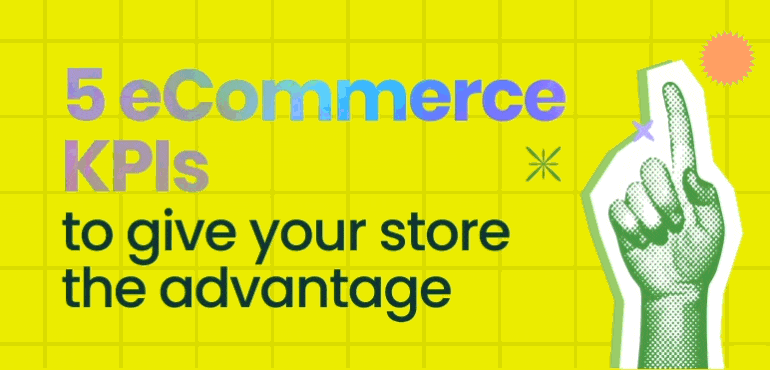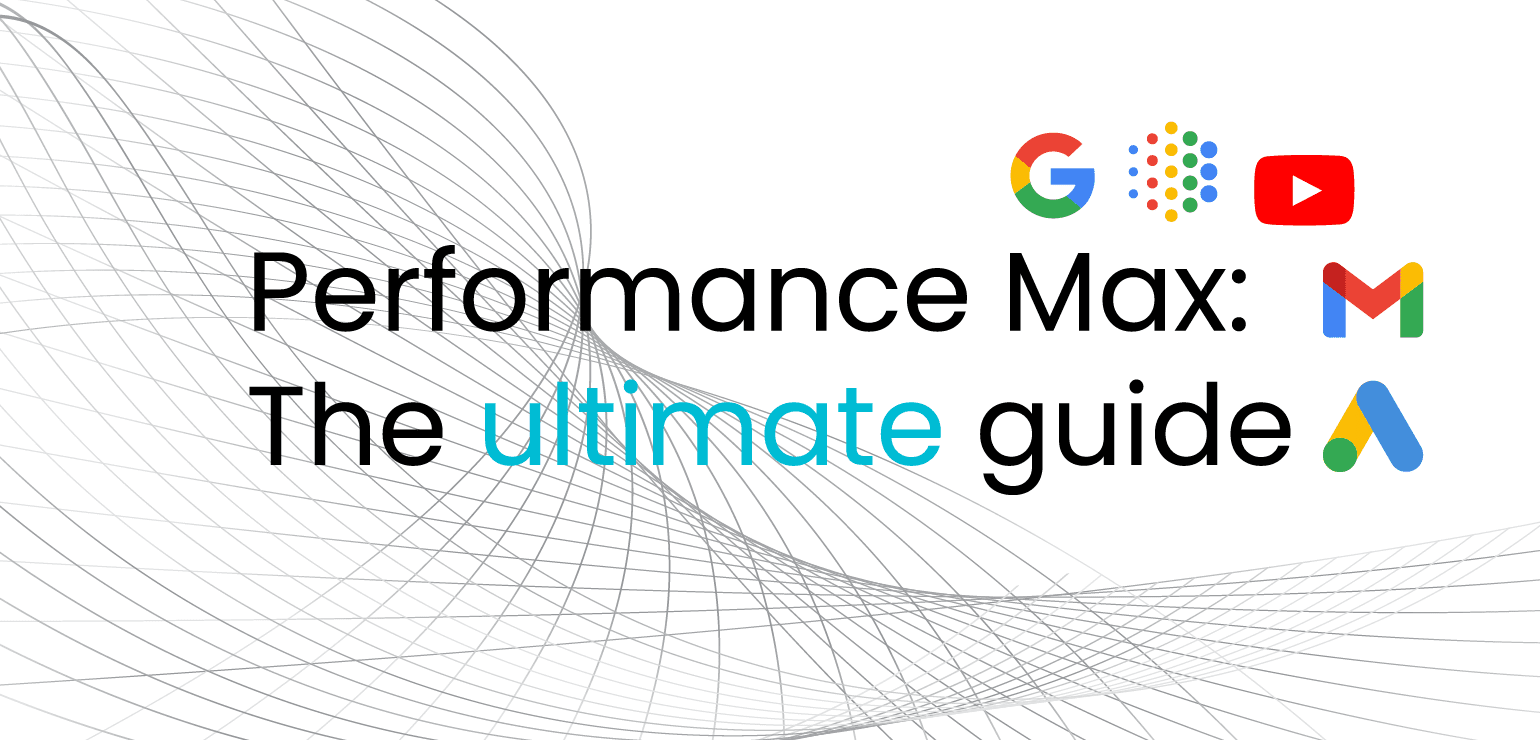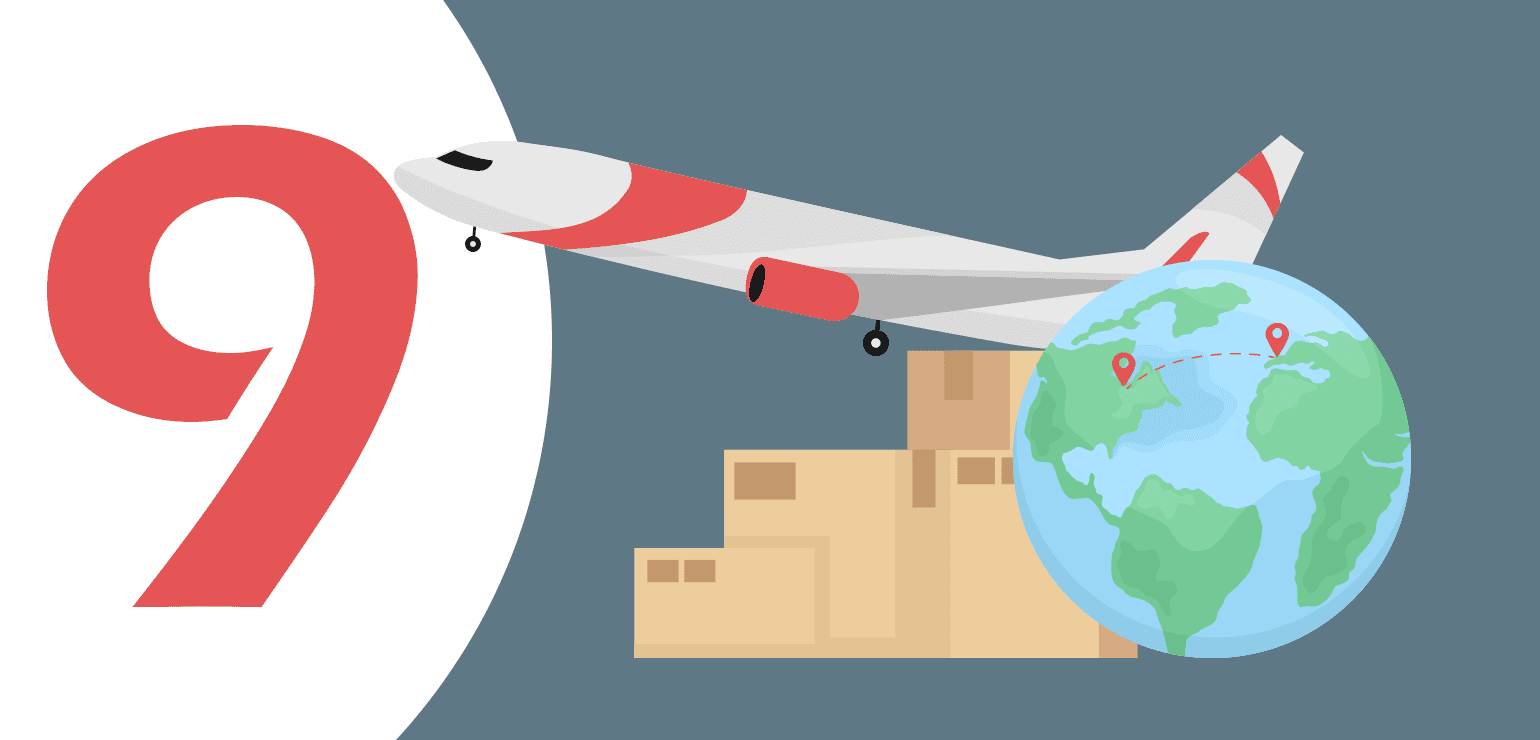5 eCommerce KPIs to give your store the advantage

Article topics
- Average order value (AOV)
- Customer acquisition cost (CAC)
- Cart abandonment rate
- Customer lifetime value (CLV)
- Return on ad spend (ROAS)
When you operate an eCommerce site, it’s crucial to understand your store’s performance.
Monitoring and tracking specific key performance indicators (KPIs) over time is critical to the health of your business. You can use KPIs to determine if a particular campaign has been successful, or if there are areas of your online store that need attention.
It’s important to choose the right KPIs to monitor. Some KPIs, like website visits, number of email subscribers, and social media followers may sound impressive but don’t help you understand your performance – these are known as ‘vanity metrics’.
The best KPIs are ones that are easy to understand and immediately actionable. Business analytics expert Jay Liebowitz put it best: a great KPI’ prompts decisions, not additional questions.’
If you’re unsure which KPIs to monitor, we’ve compiled five of the best metrics to get you started.
1. Average order value (AOV)
Average order value, or AOV, is an easy way to see how much your customers spend per transaction.
You can calculate it by taking your total revenue over a specific period of time and dividing it by the number of orders placed. So if you take £3,000 of revenue over a month and receive 200 orders, your AOV would be £15.
By monitoring your AOV regularly, you get a valuable snapshot of how your marketing is faring, as well as of the user experience on your website.
If your AOV is looking low or is stagnating, there are plenty of things you can do to boost it. Cross-selling and upselling are good ways to increase spending, as well as free shipping and discounts.
The great thing about AOV is that you can segment it to see which marketing channels lead to more spending. For example, if you find that customers that come through email have a higher AOV than those that come through social media, you can focus your efforts on the shoppers that spend more.
2. Customer acquisition cost (CAC)
You’ve got a solid sales and marketing strategy in place, but do you know how many customers it’s helping to bring to your website? This is where customer acquisition cost, or CAC, can help.
CAC is the amount of money you spend to get a new customer. You calculate it by taking your sales and marketing costs and dividing by the number of customers you get. So, for example, if your overall spend is £5,000 and you’ve welcomed 125 new customers on board, your CAC is £40.
It’s important to include all your sales and marketing costs in your CAC to ensure maximum accuracy. This includes any marketing platforms you use, website costs, agency fees, and staff salaries. While this may increase your CAC, it means that all your outgoings are considered.
What can you do if your CAC is higher than you would like? It’s an excellent opportunity to review your sales and marketing processes and see if there is anything you can optimise. Automating basic tasks can mean your sales and marketing team have more time to find new customers.
Regarding benchmarks for CAC, it’s hard to advise as it depends on your business and what you sell. A CAC of £40 is fantastic if you sell cars or holidays, but not so much if you sell low-ticket items! The best eCommerce company to compare yourself to is your own.

3. Cart abandonment rate
It’s incredibly frustrating when a customer visits your website, puts items in their shopping cart… and disappears without a trace.
Monitoring your eCommerce store cart abandonment rate means you can see how committed your shoppers are and if there are any potential issues that you need to fix.
You can work out your cart abandonment rate by dividing the number of completed purchases by shopping carts created and multiplying by 100 to get a percentage.
For example, let’s say you receive 110 completed purchases and 150 shopping carts in a month. Your cart abandonment rate would be 73%.
Don’t panic too much if your cart abandonment rate seems high – the average abandonment rate is about 70%. People leave their carts for a variety of reasons, including getting distracted and simply changing their minds.
However, if your abandonment suddenly spikes, stays high for several months, or correlates with a drop in AOV, it could indicate a problem. A higher than usual abandonment rate could indicate a complicated checkout process, poor usability, or additional costs that shoppers aren’t willing to pay.
4. Customer lifetime value (CLV)
Relationships are the name of the game in eCommerce; you want your shoppers to stick around for as long as possible. Customer lifetime value (CLV) measures how much money a customer spends with you over the course of your business relationship.
CLV is one of the trickier metrics to measure, with only four out of ten businesses confident they can measure it accurately. However, get it right, and you’re well on the way to driving customer loyalty!
The easiest way to measure CLV is to multiply customer value by average customer lifespan. To calculate lifetime value, multiply the average purchase value by the average number of purchases.
For example, let’s say you’ve calculated that your average customer spends £80 with you a year, and stays with you for five years. That’s a CLV of £400.
CLV shows how many customers stay with your business and how much revenue they generate. If your CLV drops, you can take action to improve customer loyalty, like implementing a rewards scheme or making the customer experience better.
If you monitor CLV, it’s a great idea to partner it with CAC. This means you can see how much money you spend to find a customer, and how much they spend with you in return. If your CLV is three times more than your CAC, it’s a promising sign!

5. Return on ad spend (ROAS)
If you’re running a digital advertising campaign, like Facebook social media ads, or a Google shopping campaign, it’s essential to know how effective your efforts are. ROAS is the best way to see how much money your campaigns bring your business.
Measuring ROAS is simple: take the revenue from your ad campaign, divide by the cost of your ad campaign and multiply by 100 to get a percentage.
For example, let’s say you’re running a paid search campaign and want to see how it is doing. You’ve spent £300 on ads and have received £1200 in sales as a result. Your ROAS is 400% – for every £1 you spend, your ad campaigns bring in £4 of revenue.
We’re often asked what a good ROAS benchmark is. As a rule of thumb, if your ROAS is over 400%, you’re doing well. However, it ultimately depends on your industry and the products for sale on your website.
If you’re running multiple ad campaigns, we recommend determining ROAS for all of them individually. That way, you can see which campaigns earn the most money and which need extra attention.
Want to boost your KPIs? Xigen is here to help
We hope this short guide has inspired you to start monitoring your eCommerce performance. Identify a handful of metrics to monitor, set a goal, and check your stats every month. Your store will improve in no time at all!
If you need a little extra support reaching your goals, our team of digital marketing experts are here to offer the assistance you need. From managing your PPC advertising to improving your conversion rate, we can get your eCommerce store to perform exactly how you want it to.
Contact us today and take the first step towards achieving the KPIs that count.


 Back
Back
